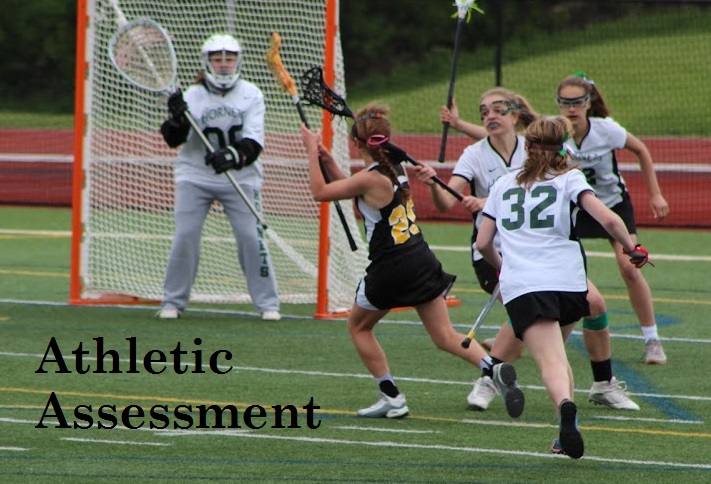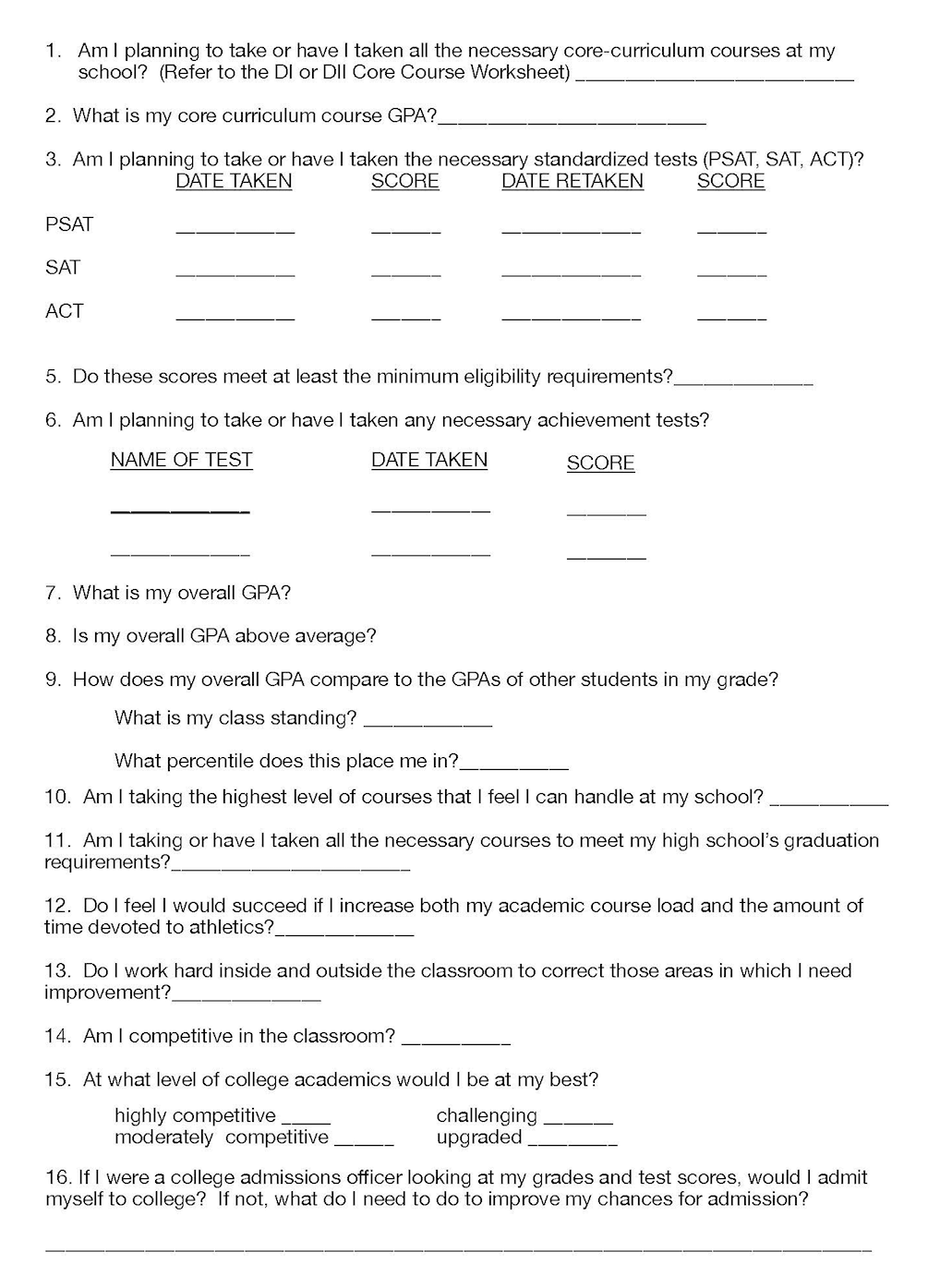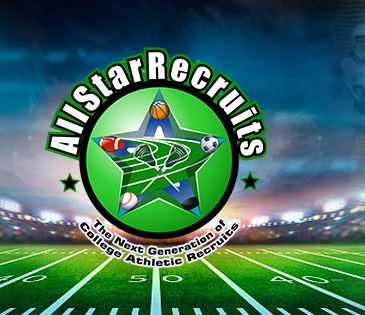
How Do You Know If You’re Good Enough?
Athletic Assessment
Before starting your journey on the quest to an athletic scholarship, you need to determine your potential for participating in a college sports program. How do you know if you are talented enough to play, and at which level of competition you can expect to play?
Follow these three steps and it will help you gain a realistic picture of your chances:
- Take a good look at yourself and your achievements.
- Compile and compare your sports stats with others at a similar level.
- Seek the advice of others.

Take a Good, Hard Look at Yourself
Understanding yourself as an athlete is important. You need to look at where you stand in comparison to others and learn about the demands typically associated with college athletics.
Below you will find an Athletic Self-Assessment. The following questions have been compiled with the help of both current and former collegiate coaches and athletes to help you assess your athletic potential and provide insight into some of the qualities and traits important for success in the world of college sports.
Athletic Self-Assessment Quiz

If you can answer yes to most of the above questions, you may have what it takes to compete at the college level.
Compile and Compare Your Stats
A good way to assess your athletic abilities is to compare your stats with those of other athletes or peers. You should start compiling your stats if you have not already. Some sources to gather these stats can be your high school or club coach, local newspapers or news websites.
If you missed it in the previous section, here is what you need to do:
- Go to AllStarRecruits.com/stats – find your Sport and take a look at some of the most popular
- Download a PDF and circle those that are applicable to you, your Sport, and the Position(s) you play (if applicable).
- Print out copies of the PDF and get a binder, folder, or a notebook to keep your log.
- Start documenting everything – not only stats, but playing time, comparisons to other teammates, and any other observations you notice. If you are late getting started, it’s not too late. Utilize resources you have available to gather as much past information as possible. These resources include your High School or Club Coach, Local Newspapers or News
- Think about your Story. While you want to be factual, there is probably a reason you aren’t getting as much playing time as someone else. Does John shoot better than you? Put a training plan in place and note your observation and plan. This is self-improvement.
- Focus on the positives. If you played 5 minutes and scored 2 goals than look at goals scored per minutes played. Again – note observations. All of this will also provide you with the resources to have an intelligent conversation with the Coach, if necessary.
- It is important to keep a running log of your Stats throughout your High School Career. I keep a small notebook with me for convenience and transfer to a Binder at home that serves as a running
If you’re going to write the story of your Athletic Career, you must have the “chapters” to back it up!
Once you have compiled your stats, use them to compare yourself to other athletes. You might compare goals scored, assists, turnovers, or save averages, etc. Having this information will give you a good indication of where you stand in relation to others.
Seek Advice
In order to gain additional insight into your chances for participation in college sports, it is important to enlist the help of others who are familiar with you and your athletic abilities. People who can help you with this includes:
- Your High School and/or Club Team Coaches
- Coaches from opposing teams
- College Coaches
- Other Coaches who have seen you play
- Current or former college athletes
Draw Conclusions Based on Your Athletic Assessment
At this point, if you’ve thought about and taken the Athletic Self-Assessment Quiz, compared your stat with those of others, and sought the advice and opinions of former and current coaches and college athletes, you probably have a pretty good idea about your collegiate sports potential. If the outlook is positive, you are ready to move on to the next step: assessing your academic potential.
Academic Assessment
It is Not Enough to Be a Skilled Athlete!
Relying solely on your athletic ability is not enough to win you a sports scholarship. Your chances increase dramatically as your grade point average (GPA) increases. Colleges want students who have excelled both in their academics as well as in their sports, and who have shown motivation and self-discipline—the qualities necessary to being a successful college athlete and student.
Of course, there is no substitute for athletic talent; however, the combination of athletics and academics is unbeatable. “The talented athlete with good grades has it made,” states high school coach Russ Peters.
A solid academic background is impressive to college programs. Coaches have only so many scholarship dollars to offer incoming, as well as continuing student-athletes. They cannot afford to allot these funds to athletes who are not self-disciplined academically and who cannot motivate themselves in the classroom. They want students who can bring the same discipline to the playing field that they have brought to their studies.
“I believe a prospective student should first and foremost have the ability to work in the classroom. If so, then he/she can be turned into an improved competitor. With the amount of student athletes vying for an athletic scholarship, grades are more important than, or as much as, athletic ability.
Academics Can Make the Difference
The better student you are, the easier it is for a college coach to make a case for awarding you an athletic scholarship. College coaches are better able to convince the athletic department and financial aid office to allocate precious scholarship dollars to high school students with good grades.
Colleges and universities want their students to graduate. Concern over the low graduation rate in some collegiate sports programs and/or the failure of student-athletes to accumulate substantial academic units during their years at the university has put pressure on athletic departments not only to select the best athletes they can possibly recruit, but to ensure that these recruits have the potential, through a proven academic track record, to be graduated from their college.
For example, a college lacrosse coach who needs a midfielder with certain skills is recruiting from a list of candidates, all with similar high school stats. All other factors being equal, the scholarship award will most likely be made to the best student, the one with the most potential to do well academically in college. You could be the one selected if you have a history of academic achievement.
Athletes must keep their grades up in order to maintain eligibility and continue to play. A coach’s nightmare is to lose a highly recruited goalie for a season because that athlete is placed on academic probation by the college and is, not eligible to compete.
It is true that at some schools admission requirements may be relaxed for the student-athlete, there is only so much leeway allowed, and it is usually allotted to the most talented and/or the most highly recruited prospects. While it is possible that a coach will be able to pull some strings for you in admissions, you cannot afford to expect this treatment. Remember: if you can not get through admissions, it doesn’t matter how talented you are as an athlete. By getting good grades, you will position yourself as a strong candidate for admission to college on your own, without having to rely on assistance from a coach.
Just as you practice your sport and workout to increase your athletic skills, you must prepare yourself academically while in high school. For most colleges, your grade point average, class standing and your SAT Reasoning Test (Scholastic Assessment Test) and/or ACT (American College Test) scores are carefully reviewed when you are under consideration for admission, as well as for a scholarship.
Academic Planning
The process of getting into the college of your choice begins as early as the ninth grade and continues on through high school. Taking the appropriate classes each year—and doing as well as you can in them—should all be part of your plan to go to college. Your guidance counselor knows which classes you need to satisfy college entrance requirements and will set up a four-year plan with you to reach your goals. If you have not talked to your counselor regarding precollege planning, do so right away.
Initial Academic Eligibility Requirements
If you want to play a sport in college, you’ve got to get started early and meet these NCAA, NAIA, or NJCAA initial-eligibility requirements.
If you are a College-Bound Student-Athlete, there are many factors that you’ll need to consider when thinking about which school to attend. One of the most important things that you must understand are initial-eligibility requirements, which are the academic prerequisites that must be met prior to being eligible to participate in intercollegiate athletics.
Each of the three college athletic governing organizations, NCAA, NAIA, and NJCAA, have developed rules establishing the athletic eligibility of athletes in their schools. This Book tries to explain these rules in a simplified fashion. Each organization publishes a book that completely explains their policies governing not only eligibility, but recruiting rules and regulations. The publications, listed below, can be obtained on-line or by contacting the appropriate organization. **Contacting the organization will always allow for the most up-to-date information. **
- NCAA “Guide for the College Bound Student Athlete”
- 877-262-1492
- www.eligibilitycenter.org
- NAIA “NAIA Guide for the College Bound Student Athlete”
- 816-595-8000
- www.NAIA.org
- NJCAA “Information for a Prospective NJCAA Student Athlete”
- www.njcaa.org
NCAA Eligibility Requirements
Your academic eligibility is determined using a sliding scale combination of your high school graduation, GPA from your core courses and your SAT or ACT test scores.
- You must graduate from high school
- You must meet the minimum GPA in your core courses
- You must meet the minimum requirements on your SAT or ACT test scores.
- Your GPA and SAT/ACT test scores must combine to meet the minimum requirements laid out on the sliding scale
- For complete NCAA academic eligibility requirements go here.
Just as you earlier assessed your college athletic potential, you should also assess your academic preparedness for college. In your quest to understand where you fit in athletically, you asked your coaches to help you assess your strengths and weaknesses. Now you should talk to people familiar with you academically to determine if you have met or are on track to meet academic requirements and deadlines.
The following three steps will help you gain a realistic picture of your academic progress and standing:
- Compile and compare your academic statistics
- Assess yourself
- Seek the advice of others
Compile and Compare Your Academic Statistics
To measure yourself against other student-athletes you needed to gather your athletic statistics. For academics, you should do the same. Statistics you may want to look at include your GPA, SAT/ACT (or PSAT-—the preliminary test for the SAT I) and other test scores, and class standing or rank. This will give you an indication of where you stand in comparison to others, as well as show you areas in which you need improvement to at least satisfy applicable minimum college requirements.
Depending on where you are in your high school career, these statistics may or may not be available. For example, if you are a sophomore and have not taken the SAT/ACT yet, look at your preliminary test scores to get an indication of where you stand. A comparison of your scores relative to the average scores of others taking the test should be provided on the report received with your test scores.
To discover your class standing or rank, see your guidance counselor or visit the registrar’s office at your high school, although some schools do not release such information. Gathering your academic statistics early will allow many of you to plan ahead.
Answering the following questions will help assess your academic progress and standing. For the younger high school student, your responses will help you plan ahead. For the older student, they indicate whether you have met the minimum requirements and are on track for admission to a four-year college.
Academic Self-Assessment Quiz
If your answers to these questions are mostly yes, you are probably on track for admission to a four-year college program and have met, or are on your way to meeting, minimum requirements. You should also compare your answers with the NCAA eligibility requirements. While other intercollegiate athletic associations have similar requirements, check with individual schools as to their eligibility criteria.
Seek the Advice of Others
You come into contact with many people in your academic life that can advise and assist you. Enlist the support of these people because they can help you gain additional insight into your chances for college readiness and success.
Putting it All Together
If you have considered the information you have gathered about yourself and found you are on track academically, congratulations! If the results from your athletic assessment were positive also, you may be on your way to winning a sports scholarship.
But what if you discover that you have not planned well or have goofed off, studying little and barely getting by? First of all, if it is early in your high school career, you can change your ways. Again, talk to your guidance counselor to find out how you can improve your grades. A change of attitude may be the most important factor, along with your commitment to study harder. But you may also benefit by learning better study habits and improving your time-management skills.
By now you should have a pretty good idea of whether you are on track, academically and athletically, for going on to college and competing in a collegiate sports program.
Now that you have assessed your Athletic and Academic Readiness, it is time to proceed to







